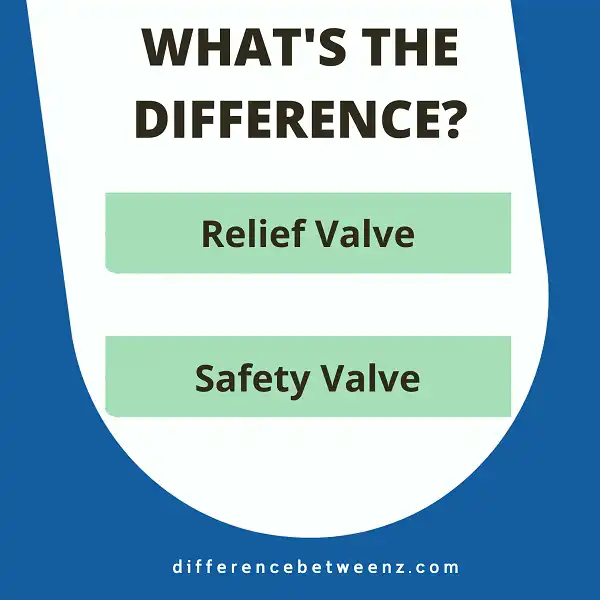Often confused due to their similar functions, relief valves and safety valves are actually two distinct types of valve systems used in industrial settings. However, knowing the differences between them is important not only in terms of understanding how they work but also in selecting the right type for various applications.
With this blog post, we’ll explain what these two valve types are, how they’re different from one another, and why it’s essential to make sure you have the correct fit for your project needs. Keep reading to learn about relief valves and safety valves so that you can make an informed decision when selecting a valve system!
What is Relief Valve?
Relief valves are a crucial type of valve used in all types of industries, as they are designed to immediately release built-up pressure whenever it starts reaching dangerous levels.
- Relief valves can be found in any system associated with liquids and gases, including steam, air, or water systems. Relief valves come in different shapes and sizes, working to ensure the safety of pipelines and other components affected by pressurized systems.
- The pressures that Relief valves protect against vary depending on the requirements of the system where they are installed – ranging between a few pounds per square inch (PSI) up to thousands of pounds per square inch.
- Relief valves provide a necessary form of protection for both people and equipment from potentially catastrophic over-pressurization incidents.
What is Safety Valve?
A safety Valve is a mechanism designed to release pressure or gases when it reaches a certain limit in order to prevent any dangerous situations.
- Safety valves are usually used in industrial applications, mainly in boilers and other devices that contain high-pressure systems. Safety valves can also be found on home appliances like water heaters.
- Safety valves are essential components of various types of equipment since they act as a safeguard against explosions or excess pressure buildup that could potentially cause severe damage.
- Safety valves play an important role in ensuring safety and peace of mind at home, work, or any other place where these mechanisms are installed.
Difference between Relief Valve and Safety Valve
Relief valves and safety valves are both important components of any industrial system, but they have different uses.
- Relief valves are designed to regulate hydraulic or pneumatic pressure in a system by releasing excess fluid or air.
- On the other hand, safety valves are specifically designed to prevent overpressure or vacuum in a system which could potentially cause catastrophic damage and fail-safes.
- Relief valves can also act as temperature controllers by letting out steam when temperatures exceed normal levels while safety valves cannot perform this function.
Thus, Relief Valves and Safety Valves both serve an important role but have their own unique functions to keep an industrial complex running safely and efficiently.
Conclusion
The relief valve is used to release the pressure that has built up in a system, while the safety valve is designed to prevent an accident from happening. It’s important to know the difference between these two valves and when to use them, so you can keep your systems running safely and efficiently.


